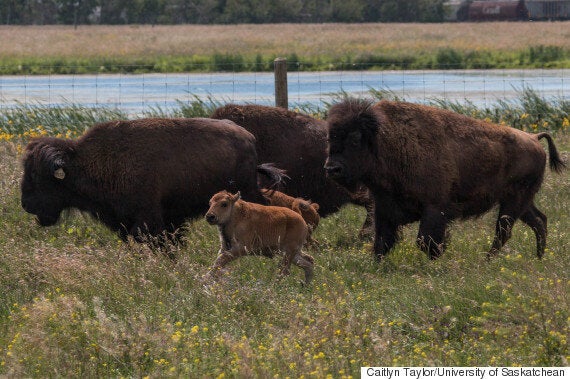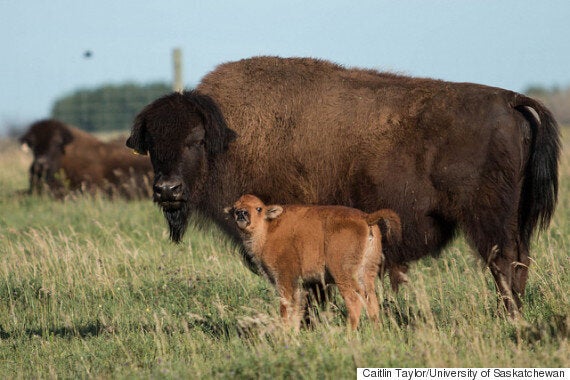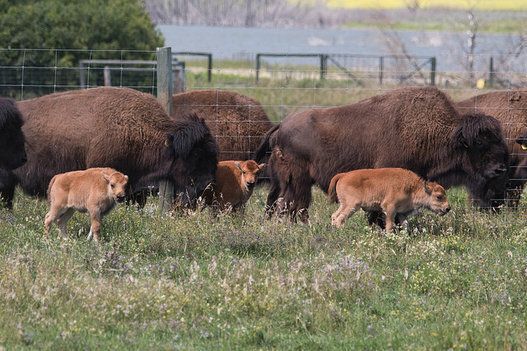Four wood bison calves born at the University of Saskatchewan might hold the secret to the species' revival.
Three of the calves were born using in-vitro fertilization, while the fourth was reproduced via a frozen embryo.
"The whole objective of our program is to conserve the species. I think what we’re doing with advanced reproductive technologies is really designed to preserve the genetic diversity [of the animals],” said Gregg Adams, a professor and reproductive specialist at the Western College of Veterinary Medicine, in a release.

These bison calves was born through in-vitro fertilization. (Photo: Caitlin Taylor/University of Saskatchewan)
The breakthrough comes after a decade of genetic research by the university team and the births are reproductive firsts for veterinary scientists.
"If we can preserve the genetic diversity, I’ll feel like I’ve done my job. That will benefit both the wild populations as well as any livestock producers," Adams said.
Historical estimates suggest there were once more than 160,000 wood bison in the country, according to the Government of Canada.
There are less than 7,000 in the wild now, due to disease and loss of habitat.

The bison calves are reproductive firsts for veterinary scientists. (Photo: Caitlin Taylor/University of Saskatchewan)
Scientists are hoping this new breakthrough can help replenish the wild population.
So far, the calves are doing well.
"The babies look great," said Adams.
"They’re keeping up with mom, and I’m really happy about it."
Also on HuffPost:
